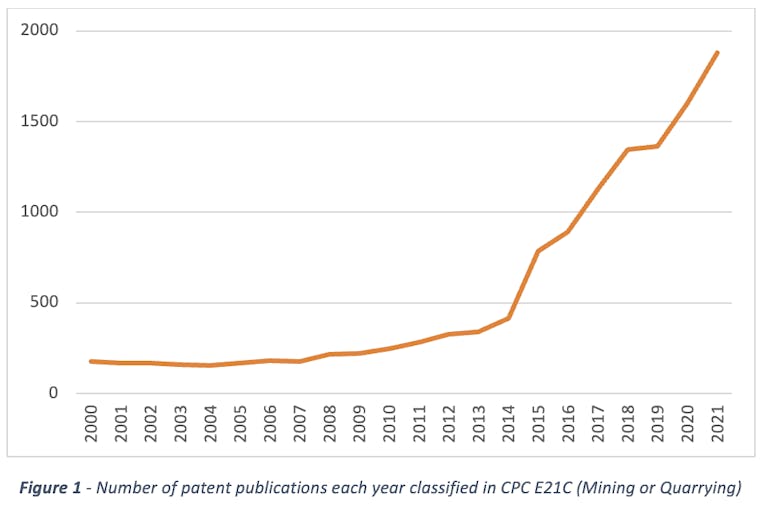A mining resurgence in the UK and Norway?

Norway and the UK are blessed with an abundance of natural resources. As such, both countries have a rich mining heritage.
However, throughout my lifetime, the story told of mining in modern-day Britain has usually been one of decline. This is something I saw first-hand when I lived in Cornwall, in Yorkshire, and on the edge of the Black Country. Each of these regions had a golden era of mineral exploitation which, for a combination of economic, political, and technological reasons, came to an end before I was born. This decline often resulted in economic hardship.
In Cornwall, for example, a crash in the price of copper and then tin led to mass emigration. 45% of 15- to 24-year-old males left for the New World between 1860 and 1900 alone. Nearly half of all immigrants in South Australia were Cornish by 1865, and a Cornish-themed festival is still held biennially by Copper Coast towns in Australia.
Ex-mining regions make up some of the most economically deprived and left-behind parts of the UK.
Changing tides
Now, though, the tide seems to be changing. Demand and pricing of many critical minerals has increased, driven by the development and growth of technologies needed to reach net-zero targets such as renewables and electric vehicles. Furthermore, rising geopolitical tensions are causing many western governments to re-think mineral supply chains and bring them closer to home. These factors have brought a renewed interest in new mining projects.
Projects in the UK
The UK is already seeing the benefit from this changing environment and is taking firm steps to resurrect its mining industry. New mines are being constructed and old mines are being reopened or re-purposed. A handful of projects include:
- Woodsmith Mine. Anglo American Plc are constructing a state of the art mine in the North Yorkshire Moors to produce 20 million tonnes of potash and polyhalite (marketed as POLY4) per year. POLY4 can be used as a low-carbon alternative to chemical fertilisers.
- Cornish Lithium & Imerys British Lithium.These companies are both targeting lithium extraction from hard rocks, in particular granite, in Cornwall.
- Cornish Metals. South Crofty was the last operational tin mine in Cornwall, closing in 1998. However, the mine still contains significant and high-quality quantities of tin ore. Cornish Metals are working to re-start production at the site.
- Anglesey Mining. This company is engaged in exploring and developing sites on Parys Mountain which hosts a significant polymetallic zinc, copper, lead, silver and gold deposit.
Norway
Norway may not have experienced quite such a historic decline in mining activity as the UK. However, the same strategic and economic tailwinds that benefit UK mining will also benefit Norway. Furthermore, increasing mineral extraction and processing will help diversify Norway’s economy from North Sea oil and gas.
This will be helped by the discovery of a rich mineral deposit by an Anglo-Norwegian company Norge Mining. The deposit contains phosphate, vanadium, titanium, and iron ores, and is being hailed as a discovery having ‘global significance’. We reported this previously here.
Innovation in mining
Along with a new emphasis on mining comes increased innovation.
New projects bring new challenges which require the development and deployment of advanced technologies. This might be to overcome minerals being less accessible or to meet environmental and sustainability regulations, for example. Innovation may be required at each stage in the lifecycle of a mine – exploration, discovery, development, production, or reclamation.
Software and AI will become increasingly important in mining technologies. For example, one application where AI could be useful is improving prospecting or exploration.
Patents as a proxy for innovation
Technical innovations are protectable with patents. So, we can use published patents as evidence of where innovation is happening.
For example, the Woodsmith Mine (referred to above) is the only polyhalite mine in the world. Innovation was therefore needed in relation to processing the mined polyhalite material. Evidence of this can be found by searching the patent registers which show that Anglo American currently have 8 or so published patent families in this area. At the time of writing, GB2620718A was the most recently published patent application. This application is seeking protection for a method of manufacturing a fertiliser pellet comprising polyhalite.
The Woodsmith Mine is a specific example. But we can also look at patent filing trends in mining more generally.
The graph below shows the number of patent publications each year from 2000 to 2021 that were classified under E21C according to the Cooperative Patent Classification (CPC) system – the code for mining and quarrying.

It is clear that there has been a strong upsurge in patent publications since 2014. This indicates ongoing innovation and investment in the mining sector and further supports there being an ongoing resurgence in mining.
The importance of patenting innovation in mining
A patent provides the patent holder a monopoly over an invention in the jurisdiction or country of that patent.
The patent owner can choose to prevent third parties from working the invention entirely. They can also choose to license the invention to one or more third parties as part of a commercial agreement (e.g. in return for a fee). The latter of these options can be particularly important for mining companies.
A mining project will often not be carried out by a single company. For example, a first company may own the site and / or the rights to a resource but may not have the necessary technology or infrastructure to explore, extract, or process that resource. Therefore, the first company may need to enter into a knowledge sharing agreement or a joint venture with a second company.
These agreements often involve licensing of patented technology. There are examples of this in the projects described above. One of these is a licensing agreement between Cornish Lithium and Lepidico.
Cornish Lithium + Lepidico
The lithium enriched granite mined by Cornish Lithium will need to be processed into battery grade lithium hydroxide. This is a multi-step process. To achieve this in a relatively low-energy manner, Cornish Lithium has an exclusive license of patented Lepidico L-Max® and LOH-Max® processing technologies.
Lepidico is an Australian company that has developed a hydro-metallurgical process which employs low cost, conventional reagents along with industry standard equipment. The process is undertaken at atmospheric pressure and modest temperature. One of the licensed patents covering these processes appears to be EP3204528B1.
The licensing arrangement benefits both parties. Cornish Lithium are able to access critical processing technology. Lepidico open up an additional revenue stream in the UK, which is a market where they do not seem to currently operate. The exclusive license between Cornish Lithium and Lepidico presumably applies in the UK only and so Lepidico are free to continue to use their technology elsewhere, for example Namibia.
All the evidence points to a resurgence in mining activity in the UK and Norway. This goes hand-in-hand with an increase in innovation. Patenting this innovation is important to enable companies to capitalise on their IP. The steep rise in patent filings since 2014 would indicate that mining companies recognise this.
